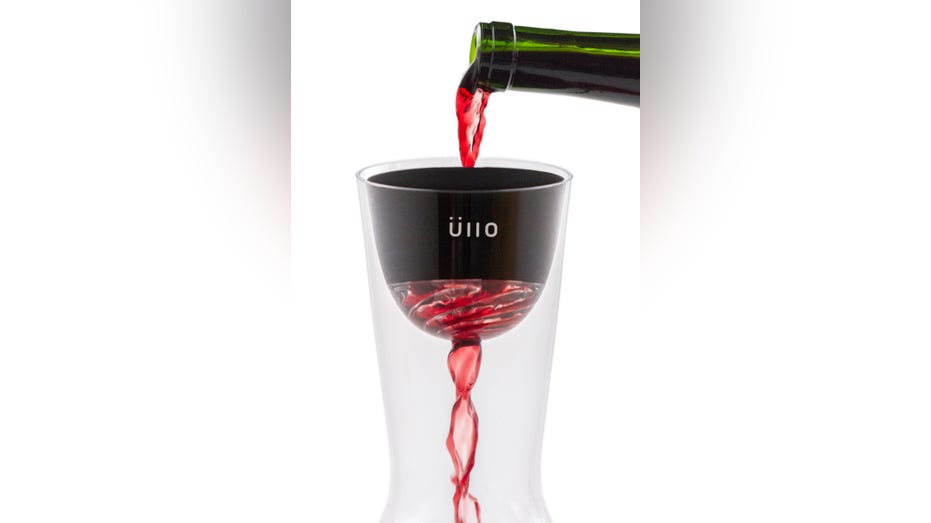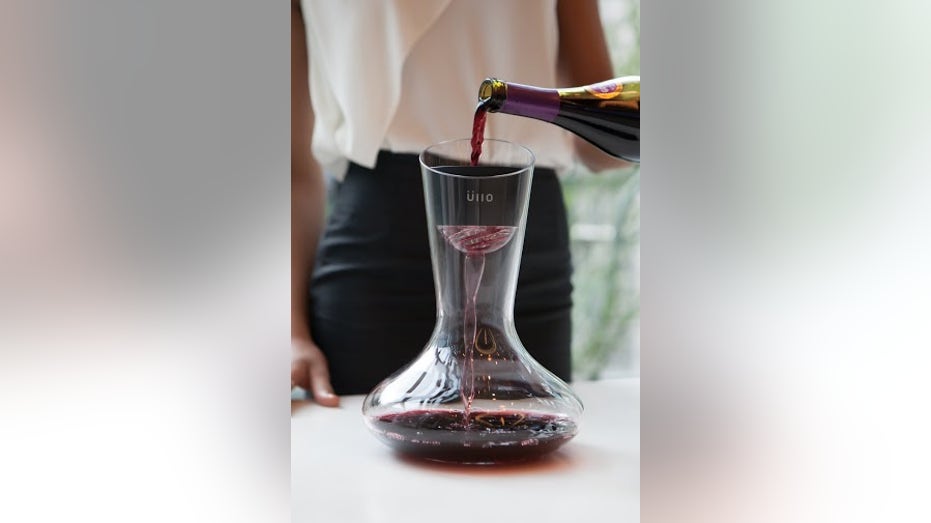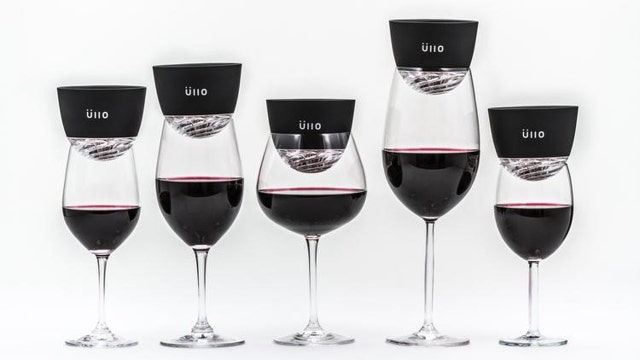This Wine-Filter Could Cure Your Headache
Wine consumption continues to rise in the U.S. every year, with retail values reaching upward of $55.8 billion in 2015. Recent projections show that the wine industry will continue to grow this year, according the statistics from the Wine Institute.
But the problem for some drinkers is they find themselves having that “wine headache” or other type of allergies after drinking it. Some researchers say that’s due, in part, to the extra sulfites that winemakers are adding to the drink for storage purposes.
“Wine makers will add up to a hundredfold more sulfites artificially. These are completely synthetically derived chemicals,” James Kornacki, founder of Üllo, a wine-purifying system designed to remove sulfites, told FOXBusiness.com.
The FDA estimates that 1% of the U.S. population has a sulfite allergy. Kornacki says it’s the man-made ones that are causing drinkers the most problems, not the naturally occurring ones that are developed during the fermentation process.
“The problem with those sulfites is that they cause a lot of reactions in people and they are known to be toxic and they taste really, really bad as well,” he added.
Kornacki, a scientist, founded his Chicago-based startup, Üllo, because both he and his aunt suffered from sulfite allergies. He hopes his new wine-purifying device will be the solution for wine lovers who have similar issues.

“It takes the sulfites right out of the wine and it’s the first product to do that,” he said. “What enables this product is the select sulfite-capture technology that I developed which treats sulfites more as like something that can be pulled out with a magnet.”
He said the biggest challenge was finding a way to remove the sulfites and nothing else—and making sure the wine did not lose its flavor.

“We don’t screw up the wine chemistry,” he said. “Wine is one of the most complex beverages that we know of—there are about 1,000 compounds in there.”
Üllo costs around $80 per device and $3 per filter, which needs to be replaced each time it is used. Retailers like Bloomingdale’s and Brookstone started selling the product after it entered the market in 2014.
The company’s kickstarter campaign, which launched last year, has helped it raise over $150,000 and really helped it gain “market validation,” according to Kornacki.
The Wine Institute, a public policy advocacy association of California wineries, declined to discuss the new technology to FOXBusiness.com. But the group did say that “sulfites have been an integral part of winemaking throughout the world for centuries.”
“A small percentage of the population, mainly people who are highly asthmatic (about 5 percent of all asthmatics), may have an allergic reaction to sulfites in wine and other food products, such as fish, cheese and fruit concentrates,” the Wine Institute said.
Sulfites have been a hot-button issue for a lot of Americans since the FDA identified them as an allergen in 1986, following a rash of asthma cases reported around that time. Sulfites were banned from raw fruits and vegetables, and a warning label was added to the back of wine labels if sulfites were found to be above “natural” levels. “Natural” levels are about 10 to 20 parts-per-million threshold. Currently, federal regulations permit up to 350 parts per million of sulfites in wine.
Organic wines are also another good option for consumers who need to avoid the extra chemicals. But wine experts say that problem with them is that without sulfites do they not age properly.
In the 1990s, Cornelius Ough, a former professor at the University of California at Davis and author of “Winemaking Basics,” concluded after years of research that wine made with added sulfites is far more superior in taste, color and stability than wine without it.
Kornacki said he continues to fight against a lot of skepticism.
“We’re not demonizing sulfites, we understand and respect their use,” he said. “Once wine makers understand that, this product will really expand their market.”




















